Spring 2020
In this issue
- OSAC in Action
- OSAC Program Office News
- OSAC 2.0 Updates
- FSSB Releases Updated Version of OSAC Organizational Priorities Document
- Do We Speak the Same Language? Words and Their Meaning are Important to Standards Development
- OSAC Registry Implementation Corner
- OSAC Standards Activities at a Glance
- Professional Organization Spotlight
- OSAC in the News
- NIST Activities
OSAC in Action
DNA Process Map Coming Soon!

Members of OSAC’s Biology/DNA committees and the Scientific Working Group on DNA Analysis Methods (SWGDAM) met in January to continue their work developing a DNA process map for the forensic science community. Expected to be released this summer, this process map will describe the current practice for processing, genotyping, interpreting, and reporting on DNA samples.
Process maps are useful tools that can help provide insight into forensic science methods and processes, identify areas for improvement, and discover where standards may be needed.
Read more about the process maps developed by OSAC’s Friction Ridge and Speaker Recognition Subcommittees. OSAC’s Firearms & Toolmarks Subcommittee is also developing a process map, and the Seized Drugs Subcommittee will be launching a process mapping working session this summer.
OSAC at AAFS

OSAC was excited to participate in the 2020 American Academy of Forensic Sciences (AAFS) Annual Meeting held this February in Anaheim, California.
- Jason Wiersema, Chair of OSAC’s Crime Scene/Death Investigation Scientific Area Committee (SAC), participated in a workshop on Mass Disasters and Disaster Victim Identification (DVI) where the OSAC Registry Approved standard, ANSI/ASB Best Practice Recommendation 010, Forensic Anthropology in Disaster Victim Identification: Best Practice Recommendations for the Medicolegal Authority, First Edition, 2018 was discussed.
- Richard Vorder Bruegge, Chair of OSAC’s Digital/Multimedia SAC presented on the latest standards development work for the digital evidence and facial identification disciplines.
- Julie Carnes, Chair of the Video/Imaging Technology and Analysis (VITAL) Subcommittee and David Marks, Chair of the Speaker Recognition Subcommittee, presented on the latest standards development work for the VITAL and speaker recognition disciplines.
- Jeff Salyards, research representative of the FSSB, spoke about statistical learning algorithms for forensic scientists and progress in the forensic sciences since the 2009 National Academy of Sciences (NAS) Report.
- OSAC, along with our colleagues at the National Institute of Standards and Technology (NIST), participated as an exhibitor and shared the latest forensic science standards and research activities with AAFS attendees.
We look forward to engaging with our forensic science partners again at the 2021 AAFS Meeting in Houston, Texas.
New Resources Available from OSAC's Fire Debris & Explosives Subcommittee

OSAC’s Fire Debris & Explosives (FD&E) Subcommittee has a new resource available for the forensic science community. The Analysis of Explosives Reference List includes books, reviews, guides, studies, articles, and other on-line resources. The FD&E Subcommittee has also updated a similar resource, the Analysis of Fire Debris Reference List. Both are available on the FD&E Subcommittee webpage. The FD&E Subcommittee appreciates the collaboration with The Centre of Forensic Sciences, Ontario, Canada.
Help Evaluate OSAC's Materials (Trace) Draft Document, Standard Practice for Interpretation and Report Writing in Forensic Comparison of Trace Materials

In preparation for submitting a document to ASTM for formal standards development, OSAC’s Materials (Trace) Subcommittee will be conducting an interlaboratory data collection exercise to evaluate the draft of its Standard Practice for Interpretation and Report Writing in Forensic Comparison of Trace Materials.
The focus of the first round of this study will be on forensic paint analysis. Please be on the lookout for an announcement regarding a web-based training session introducing participants to the draft document and exercise, which is expected to begin this summer. We encourage you to share this information with your colleagues and visit the Materials (Trace) Subcommittee webpage to start reviewing the document now, with particular attention to Sections 1-5 and 9.
If you have questions or would like to participate in the exercise, please contact Andria Mehltretter at ahmehltretter [at] fbi.gov (ahmehltretter[at]fbi[dot]gov).
Participants Needed for Organic Gunshot Residue Interlaboratory Study
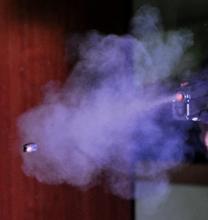
OSAC’s Organic Gunshot Residue Task Group (TG) is looking for participants to join an interlaboratory study on the collection and analysis of organic gunshot residues. This study is intended to support a draft standard practice the TG has developed which contains methodologies for gas chromatography/mass spectrometry (GC/MS) and liquid chromatography/mass spectrometry (LC/MS) analyses of organic gunshot residues.
Visit the Gunshot Residue Subcommittee webpage to learn more about the study and how you can participate.
Help Develop an ASTM Standard on Legal Issues

Past Chair of OSAC’s Legal Resource Committee, Judge Christopher Plourd, is leading efforts to develop a legal education standard for forensic science practitioners titled Standard Practice for Forensic Science Practitioner and Forensic Science Service Provider Training on Legal Issues.
This proposed standard will identify the recurring and important legal issues that forensic practitioners and forensic science service providers should be aware of and trained on. It will be under the jurisdiction of ASTM Committee E30 on Forensic Sciences and the direct responsibility of Subcommittee E30.11 on Interdisciplinary Forensic Science Standards.
Judge Plourd has started a work item within ASTM and will be the technical contact for a task group within ASTM. He is looking for approximately 10 forensic science practitioners within OSAC to participate as task group members in the development of this standard. You do not have to be a member of ASTM to be a member of this task group. If you are interested, please email Judge Plourd (christopher.plourd [at] imperial.courts.ca.gov (christopher[dot]plourd[at]imperial[dot]courts[dot]ca[dot]gov)) briefly describing your interest and your background in education and training within your forensic science discipline.
OSAC Program Office News
OSAC in Oklahoma: We've Come Full Circle...almost
In 2015, OSAC held its first in-person meetings in Norman, Oklahoma. Five years later, OSAC’s Chemistry/Instrumental Analysis and Crime Scene/Death Investigation SACs and subcommittees (SCs) came “full circle” and met again March 10-13, 2020 in Norman.
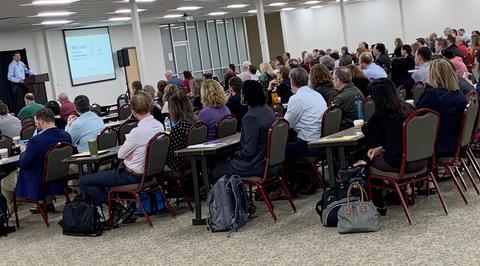
With approximately 160 attendees at the National Center for Employee Development, the four-day meeting kicked off with the plenary session. John Paul Jones, OSAC program manager, provided opening remarks and OSAC 2.0 updates. Among the 2.0 updates, he shared the newly proposed SAC and SC structures, gave updates on the Resource Committee (RC) embedding process, and introduced the interim 1.5 and proposed 2.0 Registry Approval processes.
Karen Reczek, Forensic Science Standards Board (FSSB) Ex Officio, continued the OSAC 2.0 discussion and provided updates on the newly established FSSB Technical Review Panel (TRP) Task Group (TG), which will help to develop the criteria, process, and reporting format for technical reviews. The criteria and process under development will be piloted this summer to see if changes are needed prior to launch. Karen also presented a “big picture” view of OSAC’s standards development activities by reviewing the latest subcommittee road map efforts.
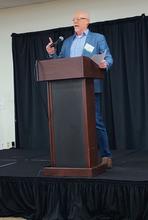
Steve Johnson, FSSB chair, gave updates on OSAC’s organizational priorities and their impact on the standards development process. He also shared updates on the FSSB Terminology TG that will manage and maintain the OSAC Lexicon. The plenary session closed with Chair Johnson announcing the recipients of the 2020 OSAC Awards.
In addition to the plenary session and concurrent committee meetings, the Chemistry/Instrumental Analysis SAC hosted a joint session and pitch meeting on the design and management of interlaboratory studies for seized drugs, glass evidence, and explosives evidence.
OSAC is grateful for the dedication and efforts from all members and affiliates in each of the SACs and subcommittees. Together, we will continue our work to strengthen forensic science through the development of scientifically sound and high-quality standards.
2020 OSAC Awards
OSAC would like to recognize and congratulate the following 2020 award recipients for their efforts to further the organization’s mission and objectives.
OSAC Distinguished Individual Service Awards:
- Stephen Greene for his contributions as a founding and serving member of the Footwear & Tire Subcommittee, especially in his role as executive secretary.
- Christina Malone for her contributions as a founding and serving member of the Video/Imaging Technology and Analysis Subcommittee, especially in her role as executive secretary, for providing outstanding operational support, and serving as the subcommittee’s Google guru.
- Carl Sobieralski for his contributions as a founding and serving member of the Biological Data Interpretation & Reporting Subcommittee, especially in his role as vice chair of the Biology/DNA SAC, and for his leadership in the development of numerous standards for the Biology/DNA discipline.
- Chantelle Taylor for her contributions as a founding and serving member of the Materials (Trace) Subcommittee, especially in her role as vice chair, member of the Tape, Paint and Polymer TGs, and the subcommittee’s Google guru.
- Blythe Toma for her contributions as a member of the Quality Infrastructure Committee and helping to create the visual process maps of various OSAC processes.
- Neil Zielinski for his continued service to the Crime Scene Investigation Subcommittee and his leadership in support of the Crime Scene Investigation Subcommittee’s Forensic Nursing Task Group.
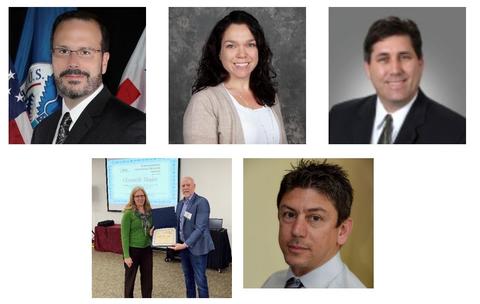
OSAC Distinguished Group Service Award was presented to the Crime Scene Investigation Subcommittee for their work to reorganize the subcommittee and implement a Task Group Milestone initiative in order to enhance operational efficiency and effectiveness. The efforts of the subcommittee members and affiliates have resulted in a significantly greater increase in the output of original draft standards in the past year.
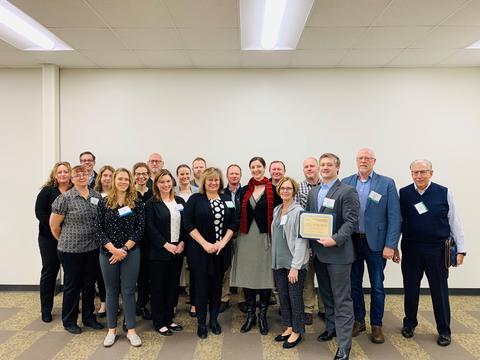
Sharon B. Nakich Award was presented to Scott Oulton for his significant contributions to OSAC while exemplifying the helpful attitude, work ethic, teamwork, and positive energy that honors the memory of Sharon Nakich.
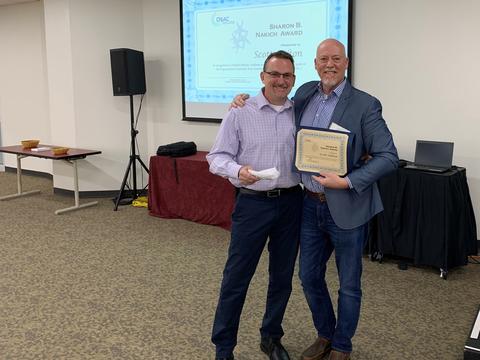
OSAC 2.0 Updates
By OSAC Program Manager John Paul Jones II
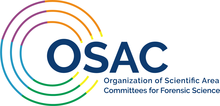
The FSSB, in collaboration with the NIST’s OSAC Program Office, has implemented the following changes in preparation for OSAC 2.0, set to launch on October 1, 2020.
Launched Interim (1.5) Registry Approval Process
This streamlined Registry Approval Process enables subcommittees to advance published standards directly to OSAC’s open comment period. The comment periods are announced in OSAC’s monthly Standards Bulletin and provide an opportunity for OSAC to obtain feedback on whether a standard should be included on the Registry. After the comment period closes and any comments are addressed, a standard is then provided to the FSSB for consideration to place on the OSAC Registry. This interim process was implemented in February 2020 and applies to all OSAC standards submitted to a standards developing organization (SDO) before October 1, 2020.
Implemented “OSAC Proposed Standard” Template
The cover page placed on OSAC’s Tier 3 documents (i.e., those drafted by OSAC and sent to an SDO for formal development) has been updated. This new “OSAC Proposed Standard” template acknowledges the subcommittee that drafted the document, informs the forensic science community and other interested parties that the document is available, and requests their consideration of OSAC’s recommendations relating to applicable forensic science practices. Designated “OSAC Proposed Standards” have been developed with input from experts in a broad array of forensic science disciplines as well as scientific research, measurement science, statistics, law, and policy. Under OSAC 2.0, the “OSAC Proposed Standards” will be eligible for listing on the OSAC Registry.
Updates to OSAC’s Organizational Structure
The FSSB has approved several changes to OSAC’s organizational structure, effective October 1, 2020.
- Increase from five to seven SACs: The current Chemistry/Instrumental Analysis SAC will be split into two. One SAC will focus on drugs/toxicology and the other on trace/fire debris. The current Crime Scene/Death Investigation SAC will also be split into two. One SAC will focus on forensic medicine and the other on scene investigations. The names for each of these four new SACs will be finalized by early summer.
- Reduction in the number of subcommittees from 25 to 22: The following subcommittees will be merged to take better advantage of the similarities in expertise and topics they address:
The updated names for these combined subcommittees will be finalized by early summer.
Transition of Resource Committee Members to Voting Members of Subcommittees
This activity is largely complete with only a few remaining resource committee members needing to make the transition to a subcommittee or stay on the specific resource task group that will continue after the formal resource committees sunset. The advantages of this restructuring were previously described in the February 2020 OSAC Newsletter.
Development of OSAC 2.0 Technical Review Panel Process
The FSSB’s Technical Review Panel (TRP) Process Task Group has met numerous times during the past two months to develop the criteria for the selection of TRP members and the processes for conducting scientific reviews of technical “OSAC Proposed Standards.” TRP members will be selected from OSAC’s application database, and to ensure a fresh and objective assessment, these panels will be independent of the subcommittee that generated the document they will review. After the process and criteria are developed, OSAC will conduct several pilots to see if changes are needed prior to launch. The criteria and process will be revised to address any challenges identified during the pilots.
FSSB Releases Updated Version of OSAC Organizational Priorities Document
The latest version of OSAC’s Organizational Priorities & Minimum Requirements for Standards Development is now available on the OSAC website. This document outlines the priorities for OSAC to achieve its mission and identifies the minimum topic requirements that SACs and subcommittees need to address when drafting forensic science standards.
Organizational Priorities: History
In preparation for the January 2015 OSAC Meetings, the FSSB issued guidance that instructed OSAC units to focus their standards development activities on the following priorities:
- Existing standards that needed updating (e.g., Scientific Working Group (SWG) documents)
- Terminology
- Method development
- Training
- Method validation
- Existing standards to be considered for the OSAC Registry
- Topics that cross disciplines and Scientific Area Committees
- Research Needs
- Cognitive Bias
- Reporting
These priorities were first published in December 2014 in OSAC’s Principles of Professional Practice (PPP) and later updated in September 2016. At a September 2017 FSSB meeting, the FSSB determined there was a need to further define what should be included in OSAC drafted standards and to provide further guidance on these priorities.
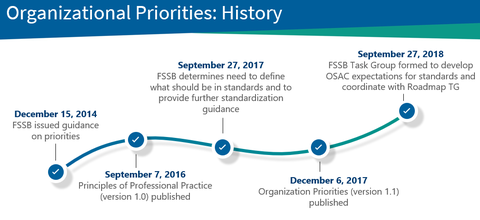
Based on the outputs from the September 2017 FSSB meeting, the PPP was revised again in December 2017 and renamed OSAC Organizational Priorities. This updated document identified the overarching elements necessary for OSAC to achieve its mission and the priorities of the organization. Following the 2018 OSAC Leadership Strategy Session (OLSS), an FSSB TG was formed to review and revise this document again, this time to identify the minimum topic areas to be covered (regardless of the SDO used) and to coordinate with the FSSB Standardization Roadmap Task Group.
Organizational Priorities: Now
The latest version of the Organizational Priorities document was published in March 2020 and will serve as a helpful guide for OSAC units. The document was renamed Organizational Priorities & Minimum Topic Requirements for Standards Development and allows for a flexible approach to drafting standards. For example, a unit may draft one standard that covers multiple areas, or draft multiple standards for a single area. Regardless of the approach, the document describes the minimum topic requirements that units must address when drafting the following standards:
- Competency standards
- Physical evidence standards
- Method development standards
- Method validation standards
- Reporting results and testimony standards
- Quality assurance standards
In addition to addressing the required minimum topics described in the document, all SACs and SCs must use OSAC Preferred Terms when drafting standards, as applicable. SAC and SC chairs will be responsible for implementing the requirements outlined in the current organizational priorities document according to the guidelines delineated in the graphic below. The FSSB will continue to review and revise OSAC’s Organizational Priorities document as needed.
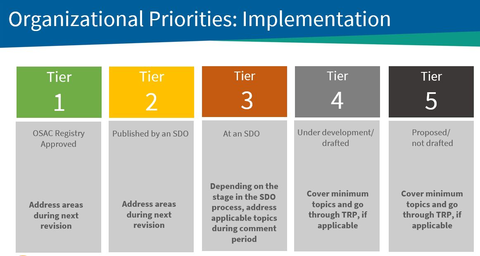
Do We Speak the Same Language? Words and Their Meaning are Important to Standards Development
By FSSB Ex Officio Karen Reczek

One of the first steps in standards development is to define terms to ensure everyone is on the same page. For example, the International Organization of Standardization (ISO) requires new Technical Committees to write a terminology standard before starting any work items. Terms are an essential part of all standards. For a standard to be implemented correctly, users need to understand it the same way the writers intended. In order to avoid misunderstanding, definitions should be included for any terms that are included in the requirements. This is particularly important if technical terms requiring specific interpretation are being used.
When OSAC started, an organizational priority from the FSSB was having agreed upon terminology that all OSAC subcommittees will use. This led to the creation of the OSAC Lexicon. With over 4,000 terms related to forensic science, the OSAC Lexicon contains terms from various sources such as existing standards, reference books, Scientific Working Group (SWG) documents, journal articles, and OSAC subcommittees. All the terms and their definitions are sourced, designating the origins of the entry.
OSAC is continuously striving to improve the Lexicon. For example, we are currently working to obtain consensus on terms, as many have multiple entries and may vary in definition. This is a long-term task, however. An immediate priority is to obtain consensus on specific terms, or “OSAC Preferred Terms.” OSAC Preferred Terms have received input from various levels of the OSAC membership and have been approved by the FSSB. There are currently 16 OSAC Preferred Terms, with more being approved by the FSSB every month. To ensure consistency and to prevent inventing new definitions, OSAC committees are being instructed to use the OSAC Preferred Terms and definitions in their draft standards, as applicable. The FSSB has also directed OSAC committees to use ISO definitions, whenever possible. The FSSB has established an FSSB Terminology TG to review and consider revisions to the current process for obtaining consensus and approving OSAC Preferred Terms. The Terminology TG will also manage the processes for updating and maintaining the OSAC Lexicon.
Want to include a term and help us grow the OSAC Lexicon? Add it using the “Suggest a Term” feature. All suggested terms and their definitions will be reviewed before being added to the Lexicon.
Read more about the Lexicon developments and newly approved OSAC Preferred Terms on the Lexicon webpage and in future editions of this newsletter.
OSAC Registry Implementation Corner

The Association of Forensic Quality Assurance Managers (AFQAM) has added an OSAC News section to their website. The first news item AFQAM shared was the joint press release from the Houston Forensic Science Center (HFSC) and OSAC announcing the implementation of standards on the OSAC Registry by the HFSC. OSAC appreciates AFQAM’s support and we encourage you to check their website for future OSAC news.
Several OSAC members will also be sharing their laboratory’s implementation efforts by publishing news articles in various professional association newsletters. For example, Jeremy Triplett, recently named as the new director of the Kentucky State Police Central Forensic Science Laboratory, will be submitting an article to ASCLD about how one section of his laboratory met the challenges of implementing the OSAC Registry approved standards related to seized drugs. Additionally, Mark Keisler, Indiana State Police Laboratory, Firearms & Toolmarks section chief, also plans to submit an article for the AFTE newsletter about implementing OSAC Registry approved standards within his section of the laboratory. We look forward to reading and promoting these publications soon!
For the forensic science service providers getting ready to undertake standards implementation, here are some helpful tools to guide you:
- OSAC Registry Implementation Plan
- FAQs on Implementation of OSAC Registry Approved Standards
- Laboratory Implementation Declaration Form
- OSAC white paper with detailed “How to” guidance for laboratories to implement standards on the OSAC Registry – COMING SOON!
These tools are also available on OSAC’s Registry Implementation webpage. Please contact Mark Stolorow at mark.stolorow [at] nist.gov (mark[dot]stolorow[at]nist[dot]gov) with any questions or for assistance on your implementation journey.
OSAC Standards Activities at a Glance
Here's a look at the standards development activities OSAC's subcommittees are working on:
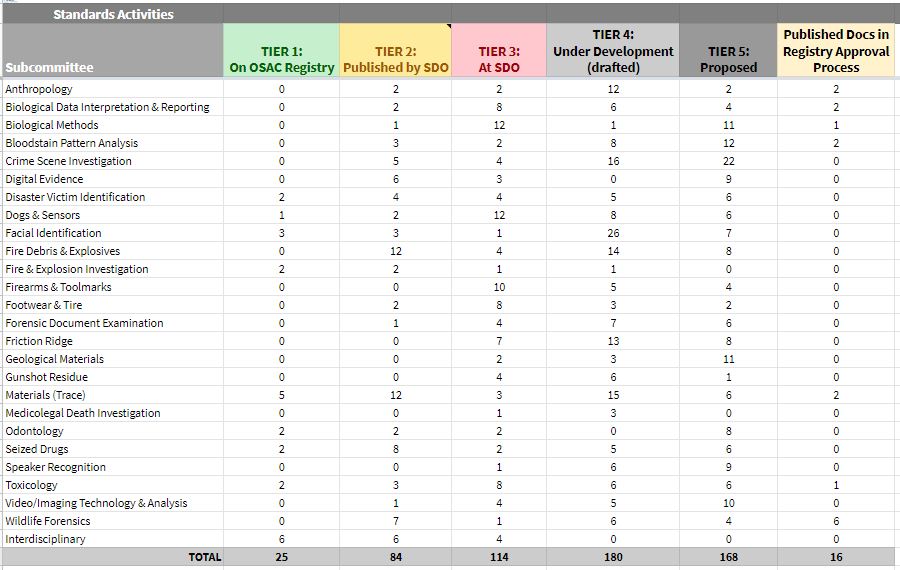
For a complete list of the standards in the development process, please visit the relevant OSAC subcommittee webpage.
Professional Organization Spotlight
The American Society of Crime Laboratory Directors

By OSAC FSSB ASCLD representative Ray Wickenheiser
The American Society of Crime Laboratory Directors (ASCLD) is a nonprofit professional society of crime laboratory directors and forensic science managers dedicated to providing excellence in forensic science through leadership and innovation. The purpose of the organization is to foster professional interests; assist the development of laboratory management principles and techniques; acquire, preserve and disseminate forensic based information; maintain and improve communications among crime laboratory directors; and to promote, encourage, and maintain the highest standards of practice in the field.
As the organization representing crime laboratory leadership, ASCLD continues to support the efforts of the OSAC. ASCLD members continue to provide employees from their organizations to participate in the development of standards in OSAC.
In addition, ASCLD has a Standards and Accreditation Initiatives Committee which focuses on promoting accreditation, standards development, and standards implementation. Through the weekly Crime Lab Minute newsletter, ASCLD notifies its membership of opportunities to review these standards as they are published by an SDO and requests feedback on the impact of any standards recommended for addition to the OSAC Standards Registry. This committee has also made recommendations on standards implementation to the ASCLD Board of Directors and is working on an implementation resource document for the ASCLD Membership.
On February 10, 2020, the ASCLD Forensic Research Committee and Standards & Accreditation Initiatives Committee, with support of the OSAC and International Association for Identification (IAI), distributed a web-based online survey. The survey will promote understanding of the extent to which standards and best practice recommendations developed or approved by OSAC have been or will be implemented or intend to be implemented into agency/organization standard operating procedures. Key challenges and barriers to implementation will be captured as well. This survey provides an important mechanism for identifying potential solutions for lowering implementation barriers and increase the likelihood that agencies/organizations can improve consistency and quality of forensic science practices using OSAC-developed standards.
On March 31, 2020, the survey closed and ASCLD has initiated their review of the data. The survey received 214 participant responses from the joint ASCLD and IAI membership – the vast majority representing U.S. city/county government (59%) and U.S. state government (24%) agencies. The survey captured a variety of perspectives – of the participants that responded, 57% were practicing examiners, 28% were supervisors/managers, and 6% were quality assurance managers.
Over the next few months, ASCLD will be working to analyze the results and identify potential solutions to support the community with the adoption of standards and best practice recommendations. The ASCLD expects to have a summary available by Fall 2020 and a strategy to assist the community by Winter 2020.
OSAC in the News
The Increasing Visibility of Forensic Chemistry
Jose Almirall, Chair of the Chemistry/Instrumental Analysis SAC, shares his thoughts on how applied research and standardization are improving the forensic chemistry disciplines.

The Researcher’s Role in Technology Transition
NIST helps to understand and communicate the needs of the practitioner community through the 25 discipline specific OSAC Subcommittees.
Two New Guides Aim to Train the Forensic Sciences Analysts on Paint, Tape Evidence
Two ASTM guides, initially developed by OSAC’s Materials (Trace) Subcommittee, could help train forensic analysts to conduct trace evidence examinations.
The ISHI Report – February 2020
An Update from the Organization of Scientific Area Committees (OSAC) for Forensic Science.
NIST Activities
Participants Needed for Bullet Black Box Study
NIST and Noblis are seeking participants for a bullet black box study to evaluate the accuracy, repeatability, and reproducibility of bullet comparisons by firearms examiners.
In Glowing Colors: Seeing the Spread of Drug Particles in a Forensic Lab
Black-light videos from NIST will help crime labs manage an invisible risk.
Divide and Conquer: New Algorithm Examines Crime-Scene Bullets Segment by Segment
Read how NIST scientists used advanced imaging techniques to create digital replicas of these important historical artifacts.
Forensic Handwriting Examination and Human Factors: Improving the Practice Through a Systems Approach
A report from the expert working group on human factors in handwriting analysis.
NIST Tests Forensic Methods for Getting Data From Damaged Mobile Phones
Scientists at NIST put law enforcement hacking tools to the test.

